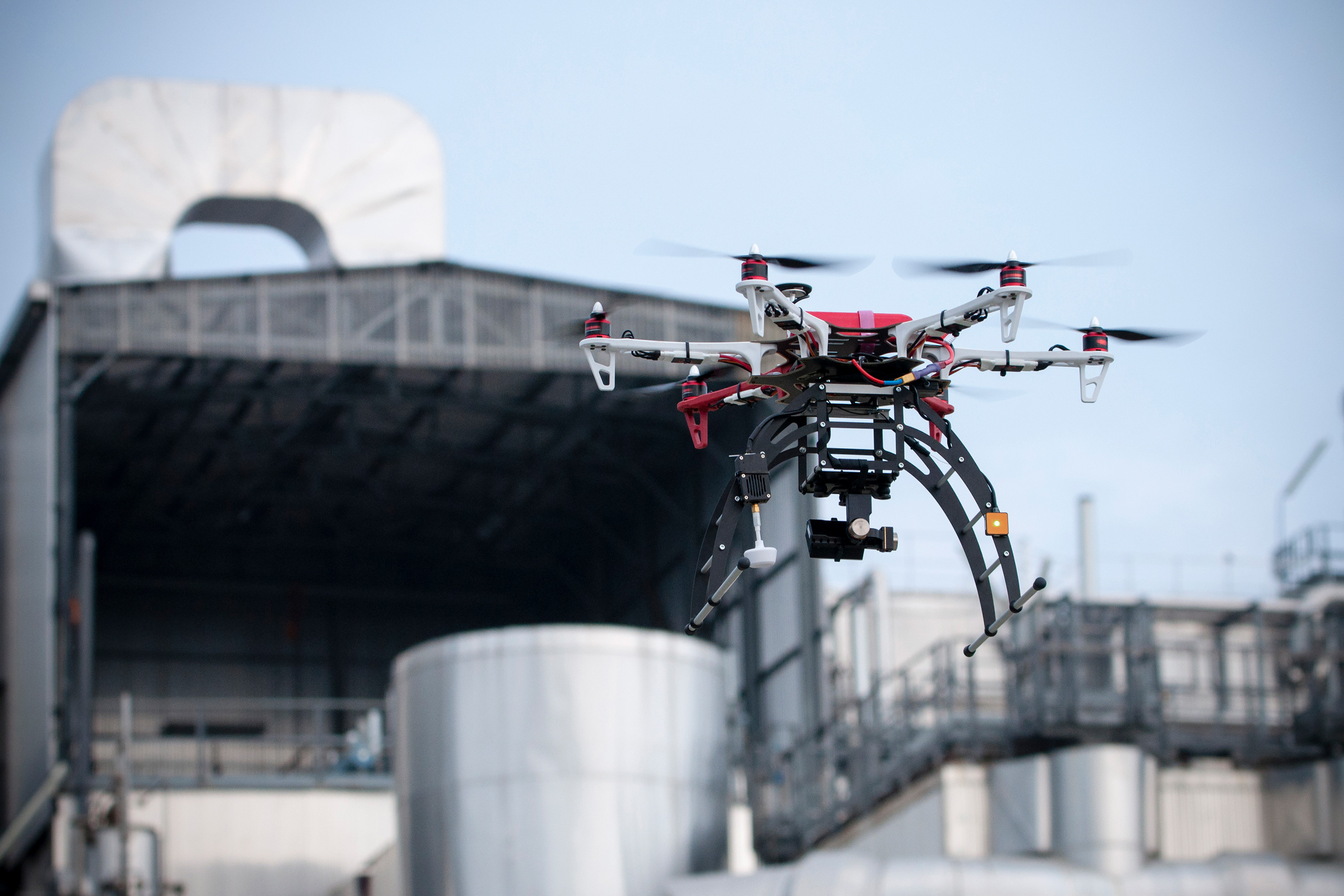
March 2, 2015
At NBAA’s 2015 Leadership Conference last week, a panel of industry experts discussed the business and economic opportunities for unmanned aircraft systems (UAS), but also identified challenges that flight departments would face with incorporating UAS into their operations. Panelists also discussed the notice of proposed rulemaking (NPRM) for the commercial use of small UAS (s-UAS), which was released on Feb. 15 for public comment.
Panelists were:
- Sarah Wolf, NBAA senior manager, security and facilitation, who participates on RTCA special committees related to UAS integration
- Ed White, chairman NBAA Corporate Aviation Management Committee (CAMC)
- Brad Hayden, president and CEO of Robotic Skies
- Dr. Brent Terwilliger, program chair for masters in science in unmanned systems Embry-Riddle Aeronautical University and chairman of CAMC’s new UAS subcommittee.
Categories of UAS Operations
While the FAA has not yet designated official classes of UAS, Hayden identified four categories of UAS operations:
- Consumer-Hobbyist
Personal hobby flights are not covered under the NPRM, instead they are subject to longstanding rules governing remote controlled aircraft. - Commercial s-UAS Line-of-Sight Operations
This category is directly covered by the NPRM. UAS must be less than 55 pounds and flights are restricted to line-of-sight operations under tight limitations: below 500 feet, with 3-mile visibility, daytime only and not above people. - Autonomous/Unmanned Traffic Management Systems
“These are the ones Amazon and Google want to fly, and they’re going to be flying under pre-setup flight paths in an urban environment,” said Hayden. These operations would not be remotely piloted, but would be flown autonomously. - Remotely Piloted Operations Beyond Line-of-Site
These operations would be flown by pilots beyond line-of-site, using first person view or other sensor system. Hayden predicts these operations would be required to be flown by IFR-certified aircraft. “So these are going to be flying in and out of our airports, and flying up in the flight levels with our aircraft, controlled by ATC,” he said.
Rules for beyond line-of-sight and autonomous UAS operations are being developed by the FAA, through its UAS Advisory and Rulemaking Committee (ARC). NBAA has been an active participant on the UAS ARC since its inception, and has participated in RTCA working groups providing industry recommendations on safe integration of UAS into the national airspace system.
Despite limited scope of s-UAS operations permitted by the NPRM, Terwilliger predicted substantial growth in this area. “We’re going to see significant interest in this – significant volume of aircraft in the sky under 500 feet,” he said. Possible uses for s-UAS include power line inspection, aerial photography and precision agriculture. “If I was operating a small crop dusting operation, I would look at having a UAS as simply having another tool in my toolbox.” said Hayden.
Educating Small UAS Operators – Inside and Outside the Company
Wolf noted that flight departments may not always be approached within their companies about UAS operations, but should make an effort to be involved in such discussions, since flight department personnel can provide critical experience on matters related to safety, airspace and maintenance. Manufacturers of s-UAS typically do not provide the documentation and support that flight departments are used to. “They know they want aviation-level maintenance, but they don’t understand exactly what that means yet,” said Hayden.
Panelists cited education – such as the “Know Before You Fly” initiative supported by NBAA – as a key element in the safe use of s-UAS. “We took a whole bunch of people, gave them an aircraft to fly, not necessarily with a pilot’s license” said Hayden. “These people haven’t yet experienced aviation litigation. When you’ve been in a courtroom, that’s a whole different perspective.”
The NPRM would require s-UAS operators to pass an aeronautical knowledge exam and obtain an FAA UAS operator certificate, with biennial reexamination in line with recertification requirements for pilots of manned aircraft.
Beyond Small UAS
Even though the NPRM only covers s-UAS operations below 500 feet, attendees and panelists were eager to discuss possible future UAS operations for larger aircraft and in other areas of the NAS.
“Right now Google, Facebook and DARPA are all looking at large-scale UAS that are going to fly at altitude, in order to bring data connectivity to places that are, right now, inaccessible.” said Terwilliger. Other possible uses include short-haul freight and fighting wild fires.
“When we talk about UAS we tend to go to the military systems,” said Terwilliger “A lot of what we’re going to be seeing come into the commercial realm are going to be derivatives of that.”
According to Terwilliger, a market consolidation by a few large UAS manufacturers that can leverage economies of scale will have a positive impact on safety. “It’s the military systems that you see right now getting these special airworthiness certificates,” he said. “That is where you have to have that documentation to get that certification.”
Industry Input Essential
Wolf encouraged the business aviation community to share their feedback on the s-UAS NPRM with NBAA at uas@nbaa.org. Other panelists echoed this sentiment. “We are all stakeholders in this industry,” said Terwilliger. “We have to have these collaborative discussions and provide information back to the FAA.”
“As we dig deeper and deeper into this, it has profound implications to our business,” said White “That’s why we’re here talking about it today, so we can get out in front of this and make sure we have a seat at the table when it’s time for certification, regulation and operation of UAS in our airspace.”


 International Business Aviation Council Ltd.
International Business Aviation Council Ltd.